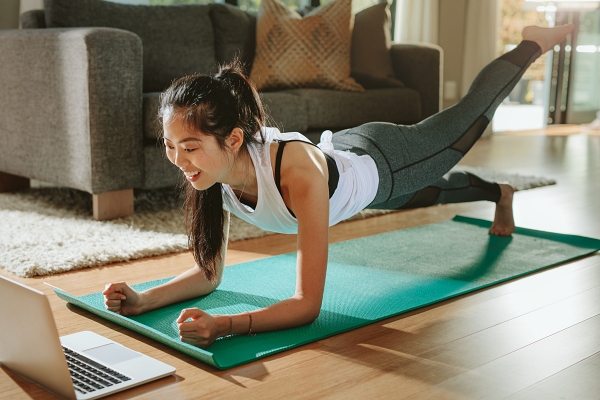
Timeless Strategies to Get in Shape that Fit All Budgets
"Getting in shape", "losing weight", "getting fit and toned", "lowering blood pressure", "dropping a size"... these are all different versions of your intentions to live a better life and feeling better throughout the years.
But it's so hard, isn't it?
It seems like there are always new fitness and diet fads popping up, and some of those cost a lot of money! They promise you the best shape of your life, but they're out of your price range... so when the free trial ends, back to your old habits you go.
The thing about getting in shape, losing weight, whatever that looks like for you, is that it has nothing to do with the money you may or may not have. It has to do with the habits you put in place. And many of those habits can be completely free, be done at home, no matter what your fitness level is, and can be adjusted to your own budget.
Incidentally, we are living through an unprecedented time where no matter how much your neighbor is paying for his or her gym, it's closed. No matter how much Karen at work is paying for her organic, grown-by-a-unicorn vegetables, she's stuck at home, just like you. At a time where the financial impact of a global pandemic is putting money-consciousness at the forefront of all of our minds, you might be thinking about how you can continue building upon some of the good habits you had in place now that you can't go to the gym or work with a personal trainer, either because of closures or for money reasons.
Well, you're in luck, because like many other things, people have been getting in shape on the cheap for ages, and their tried and true strategies are well documented. Here are some of our favorites:
1. Eat at home - make as many of your meals as you can.
Takeout is expensive. Period. When you think about all the dishes you order, depending on the size of your family or your desire to avoid cooking for a few more meals, plus sides, plus delivery fees, it adds up. When you multiply that by a couple of times a month, or worse, a week, you could be looking at hundreds of dollars a month spent on food that isn't made with the healthiest ingredients. "A minute on the lips, a lifetime on the hips" is right. By cooking at home, you can control the quality of the ingredients you use and play with healthier versions of your favorite dishes. A great place for some ideas of cheap, healthy meals you can cook at home around items you can buy under the SNAP program (food stamps) is Leanne Brown's Good and Cheap. You can download the free pdf in English or Spanish at her website.
2.Get outside
There are so many physical activities that you can do with minimal expense! Walking, biking, running, rollerblading, hiking, swimming, surfing...many of these only require having sneakers and maybe a parking fee if you're going hiking and there is a charge to park. But in all of these, the common denominator is getting outside and moving! Put on your sneakers, dust off your old bike that's gathering dust in the garage or rent one if your city has a bike-share program. You can go for a walk by yourself to enjoy the stillness of the early hours of the morning. These are all activities you can do with minimal equipment and require skills that you probably learned when you were a kid, like riding a bike or walking.
3. Working out at home
The Internet strikes again! There are oh-so-many free workouts available, either on websites or by your favorite fitspo influencer. Many of them require no equipment and target multiple muscle groups. Many are also short, which means you don't even need that much time to complete them. Think those home workouts are just pushups and jumping jacks? Think again! There is HIIT (high-intensity interval training), yoga, barre, Pilates, shadow boxing, jump ropes, Zumba, and the list goes on. A simple internet search will give you endless results! If you want extra guidance, look up videos on YouTube. Darebee is a great source of simple, targeted routines for different muscle groups, most of which require no equipment and are free to download. The 7-Minute Workout, also found on multiple free apps for iOS and Android, is also a great way to build up your fitness level without any equipment and using very little square footage.
4. Check your insurance benefits
Many insurance companies offer incentives and rebates for joining - and using gyms. Check your policy to see if it includes covering part or all of a gym membership. Some insurance companies - and employers - will offer incentives for joining classes, gyms, or buying equipment to work out at home. At the end of the day, healthy employees are less costly to employers and insurance companies, so it is in your best interest, and theirs, to get you healthy.
At the end of the day...keep it simple.
Take small, consistent steps to build upon your habits. Drop to the floor and do pushups or crunches every commercial break. Take an after-dinner walk. Get up from your desk for a few minutes every hour. Keep your meals to a few simple ingredients - preferably things that have few ingredients and are not processed. Save money on sugary drinks and stick to water, coffee or unsweetened tea. Start a "workout jar" and put a few dollars in for every workout or meal you prepare at home. You'll be surprised at how far you'll come over time doing things you enjoy and that cost you little to no money. You got this!